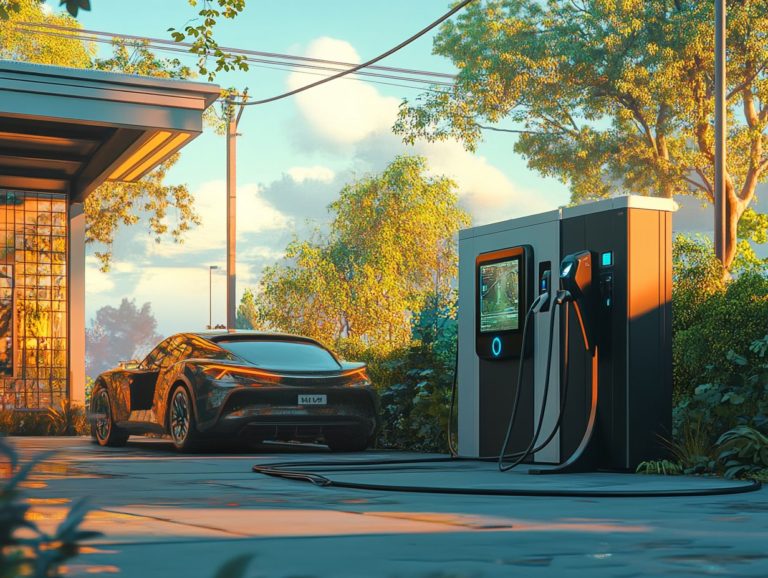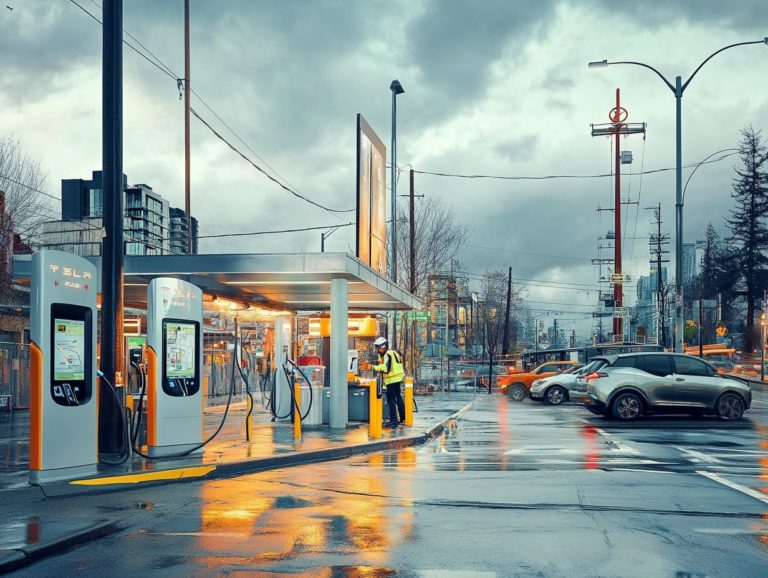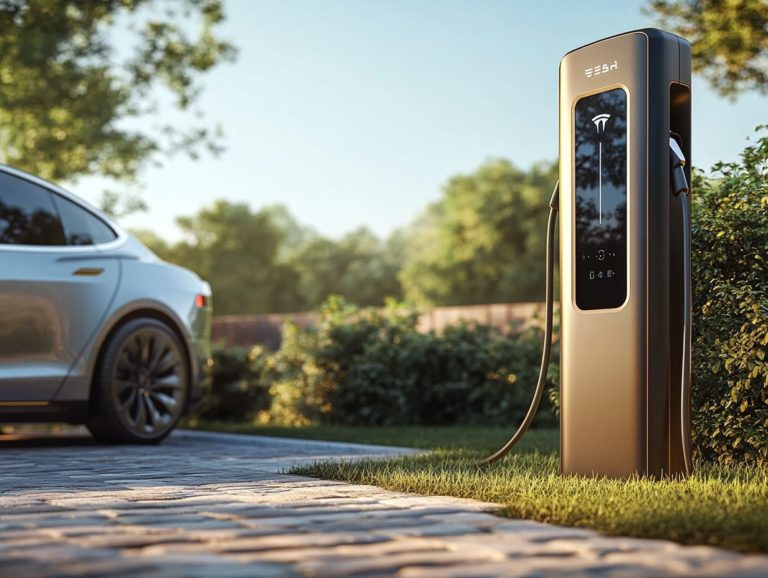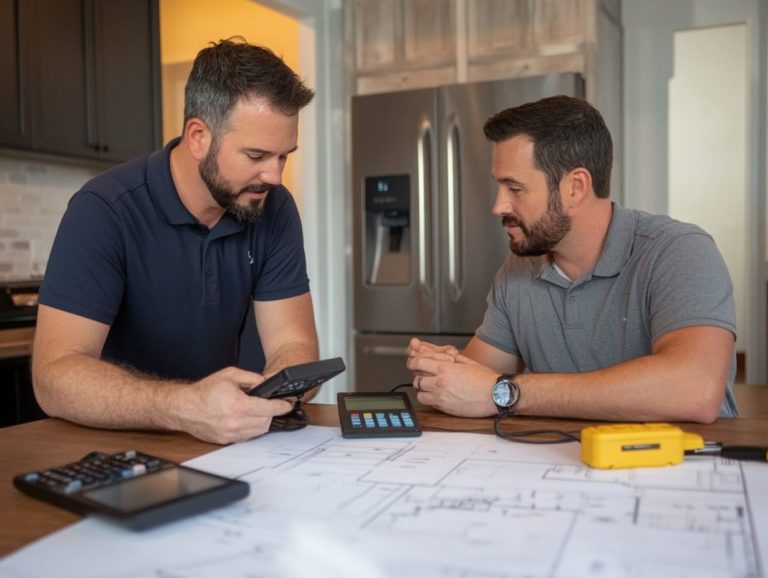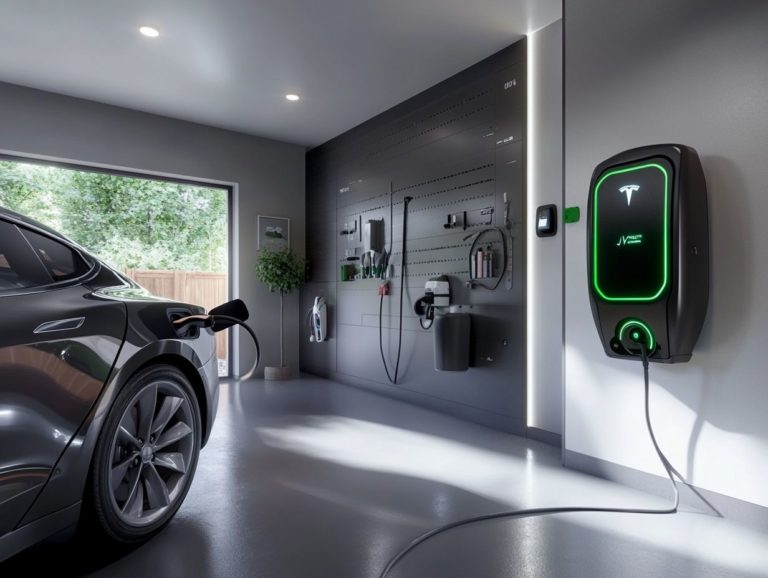How to Advocate for More Charging Stations
More people are switching to sustainable transportation every day! You ll notice the increasing demand for electric vehicles (EVs). This shift highlights a vital necessity: the expansion of charging stations.
Charging stations are pivotal in promoting EV adoption and offer essential environmental benefits.
In this discussion, you ll explore the current gaps in charging station availability, effective strategies to advocate for more stations, and inspiring success stories that showcase progress.
Together, let s embark on this important journey toward a greener future.
Contents
- Key Takeaways:
- What are Charging Stations?
- The Importance of More Charging Stations
- Identifying the Need for More Charging Stations
- Steps to Advocate for More Charging Stations
- Overcoming Obstacles and Challenges
- Success Stories and Examples
- Frequently Asked Questions
- 1. How can I advocate for more charging stations in my community?
- 2. What resources can I use to support my advocacy efforts?
- 3. How can I involve my local government in advocating for more charging stations?
- 4. What can I do to encourage businesses to install charging stations?
- 5. How can I raise awareness about the benefits of charging stations?
- 6. What are some potential challenges I may face in advocating for more charging stations?
Key Takeaways:
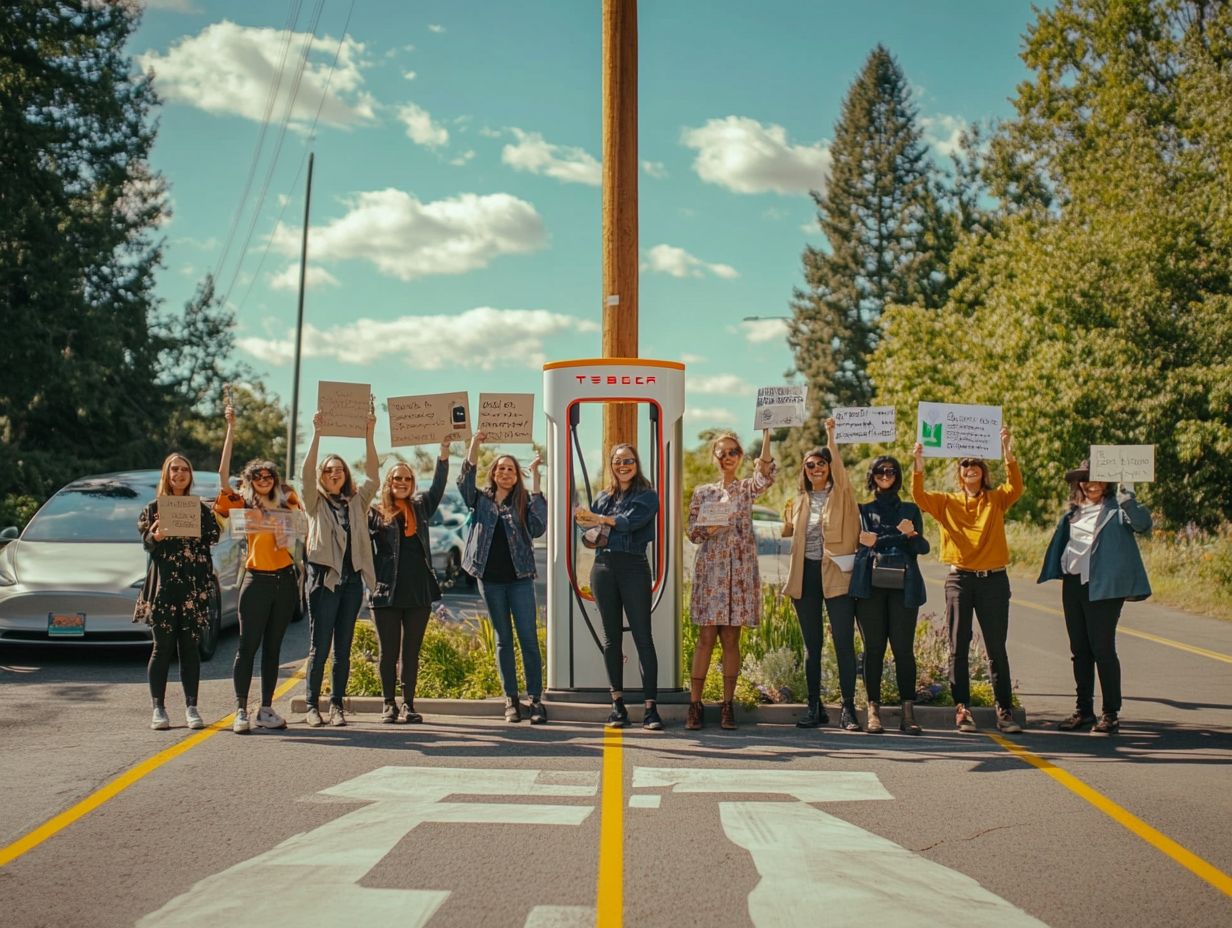
- Advocate for more charging stations to increase electric vehicle adoption and reduce environmental impact.
- Identify the need for more charging stations by researching and building a coalition with other stakeholders.
- Overcome obstacles such as funding constraints and resistance from stakeholders by showcasing successful advocacy efforts in other communities.
What are Charging Stations?
Charging stations are essential elements of the electric vehicle ecosystem, acting as designated spots where electric vehicles (EVs) can plug in to recharge their batteries. As electric vehicles rise in popularity across the United States, it s crucial for you and local governments to grasp the functionality, types, and locations of these charging stations.
These public charging infrastructures support the electrification of transportation and play a pivotal role in dismantling the barriers to charging that many encounter, especially in low-income neighborhoods and areas with few or no charging stations. Fostering community engagement and awareness regarding charger installation is vital for ensuring equitable access to these invaluable resources.
The Importance of More Charging Stations
The significance of expanding charging stations cannot be overstated; they are crucial for the widespread adoption of electric vehicles (EVs) and the transition to sustainable transportation. With the U.S. Department of Energy highlighting the necessity of enhanced public charging infrastructure, local governments and community organizations are stepping up to tackle charging deserts and ensure equitable access to EV charging solutions.
This need is especially pressing in low-income neighborhoods, where energy costs and health disparities can hinder electric vehicle adoption. By improving public charging infrastructure, you can also tap into federal funding opportunities and support grassroots movements that focus on environmental justice and mobility hubs.
Impact on Electric Vehicle Adoption
The rise of charging stations directly influences your decision to adopt an electric vehicle by tackling crucial barriers like accessibility and availability in urban and low-income neighborhoods. A strong EV charging infrastructure allows you to feel more at ease about making the switch, knowing you can easily find charging stations and use them without the nagging fear of running out of battery.
Having charging stations nearby offers the convenience you value as a modern consumer, especially when accessible services play a key role in your decision-making. Locations with ample charging options help alleviate anxiety about range limitations, a common concern for many potential adopters.
Efforts to expand equitable access to these facilities, particularly in underserved areas, are vital in fostering a sense of community and collaboration. This increased accessibility not only enables you but also contributes to a collective movement towards sustainable transportation, aligning with broader environmental goals and ensuring that everyone has the opportunity to take part in this important transition.
Environmental Benefits
The environmental benefits of a widespread EV charging infrastructure are nothing short of transformative. By increasing the use of electric vehicles, you contribute significantly to cleaner air and a reduction in greenhouse gas emissions.
Facilitating this transition not only enhances your community s air quality but also helps address health disparities that disproportionately affect low-income neighborhoods, often victims of environmental racism, which refers to the unequal distribution of environmental hazards in communities based on race. When you integrate renewable energy sources into charging stations, you enhance their sustainability and pave the way for a more environmentally just future.
This transition also reduces harmful pollutants, which are often linked to respiratory diseases and various public health concerns. It encourages the use of solar and wind energy, further diminishing reliance on fossil fuels.
With every additional electric vehicle you see on the road and each strategically placed charging hub powered by green energy, communities are enabled to combat the systemic inequities that have long plagued them.
Embracing electric mobility not only benefits you but also boosts our planet’s health! This ensures that all neighborhoods, regardless of economic status, can breathe easier and truly thrive.
Identifying the Need for More Charging Stations
Recognizing the necessity for additional charging stations is essential for seamlessly incorporating electric vehicles into our transportation networks. Many urban areas still grapple with considerable charging deserts, where access remains limited or entirely absent.
Local governments must evaluate the current landscape of EV charging infrastructure, ensuring it aligns with community needs while tackling obstacles to charging access. By looking at existing public charging facilities and gaining insights into the demographics of the served areas, stakeholders can strategically pinpoint locations for new station installations, thereby enhancing the adoption of electric vehicles.
Current Availability and Demand
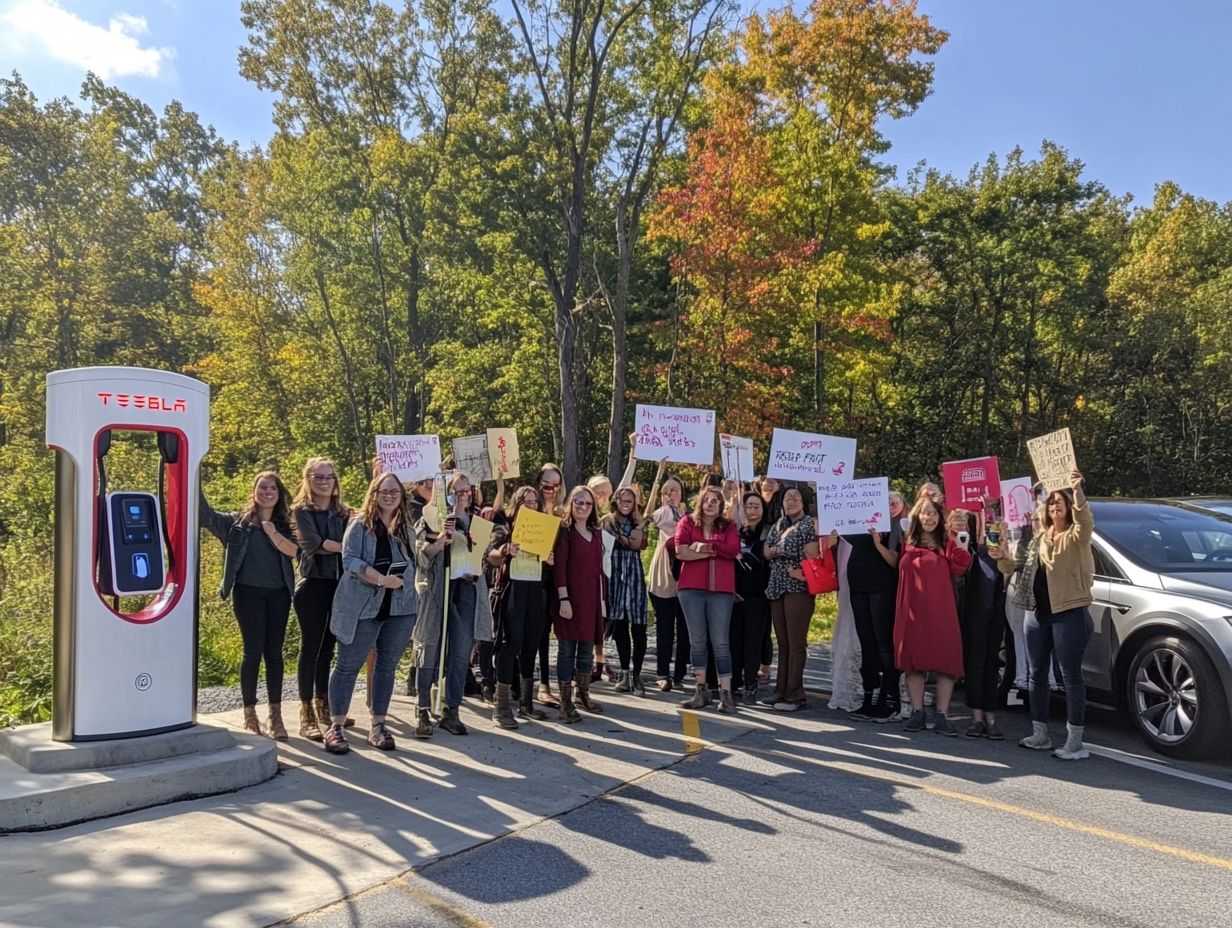
Evaluating the current availability of charging stations is crucial for understanding the landscape of electric vehicle adoption and the accessibility challenges that potential EV users encounter. As local governments advocate for the expansion of charging infrastructure, analyzing where existing charging stations are located particularly in urban areas and low-income neighborhoods can reveal important gaps that need fixing. This analysis, combined with the rising demand for electric vehicles, can inform future infrastructure development.
Recent statistics indicate that, despite an increase in the number of charging stations, availability still falls short of the growing interest in electric vehicles. For example, in many regions, you ll find fewer than one charging station for every ten electric vehicles, highlighting a pressing need for strategic enhancements. Ensuring equitable access to charging infrastructure is vital, as it directly influences adoption rates, especially in underserved communities.
Local governments are instrumental in this development, crafting policies that not only encourage the installation of more charging stations but also guarantee they are distributed fairly. This approach fosters a more inclusive transition to electric transportation, paving the way for a sustainable future.
Steps to Advocate for More Charging Stations
Advocating for more charging stations requires a thoughtful approach to ensure that the community’s voices resonate and their needs are effectively met. By engaging local governments and community organizations in your advocacy efforts, you can cultivate a coalition that underscores the urgent need for public charging infrastructure. For those traveling, understanding how to find charging stations while traveling is particularly important, especially in areas plagued by charging deserts.
Building relationships with local officials and clearly demonstrating the demand for electric vehicle access can pave the way for meaningful discussions about funding opportunities and infrastructure development.
Let s work together for our community s greener future!
Research and Planning
Effective advocacy for increasing charging stations starts with thorough research and planning. This effort directly addresses your community’s specific needs and informs local governments about the challenges potential electric vehicle users face, including how to integrate charging stations in smart cities.
Comprehensive surveys capture residents’ views on electric vehicles and their usage patterns. Demographic studies reveal important data on income levels and vehicle ownership in your community.
Analyzing existing charging locations is equally vital. Understanding whether current stations meet demand helps pinpoint service gaps. This multifaceted approach underscores the importance of addressing community needs and equips you with compelling data to influence decision-makers.
Building a Coalition
Building a coalition is essential in advocating for more charging stations. It unites community organizations, local governments, and stakeholders around the shared goal of enhancing access to electric vehicle charging infrastructure. Such coalitions amplify advocacy efforts, pooling resources and expertise to tackle barriers to charging and ensure equitable access in low-income neighborhoods. Collaboration is the cornerstone of a sustainable and impactful movement.
To identify potential partners, assess the interests of various groups and align them with your coalition s mission. This creates a situation where everyone benefits. Facilitating collaboration hinges on open communication and shared strategies, allowing members to combine funding, technical expertise, and outreach capabilities.
Successful coalitions show what can be achieved. For example, the Electric Vehicle Charging Coalition in California significantly expanded charging access. The Clean Cities Coalition network also promotes alternative fuel technologies nationally. These groups illustrate how leveraging diverse networks drives substantial change, paving the way for a more sustainable future for everyone.
Meeting with Local Officials
Meeting with local officials is a crucial step in advocating for more charging stations. These discussions present invaluable opportunities to share research findings, articulate community needs, and showcase robust public support for enhancing EV charging infrastructure. Local officials can facilitate development, unlock funding opportunities, and address barriers to charging that your community faces. Engaging them effectively can lead to meaningful change and drive community involvement.
To maximize the impact of these meetings, prepare comprehensive presentation materials that clearly highlight the benefits of additional charging stations and specific community needs. Communicating these needs with clarity enables local officials to understand how they can best serve their constituents.
Following up after discussions is crucial for maintaining momentum. Whether through emails, calls, or shared resources, keeping communication lines open ensures your advocacy efforts remain a priority on their agenda. Building genuine relationships with officials fosters trust and enhances collaboration, easing navigation through future challenges.
Overcoming Obstacles and Challenges
Overcoming obstacles and challenges is essential when advocating for more charging stations, especially when facing funding constraints and pushback from stakeholders who may not recognize the immediate value of public charging infrastructure.
You need to devise advocacy strategies that navigate these hurdles, emphasizing the long-term benefits of expanded EV charging access. Highlight improvements in public health, cleaner air, and the reduction of health disparities in low-income neighborhoods.
Engaging stakeholders through open dialogue can also ease any resistance they may have.
Funding and Budget Constraints
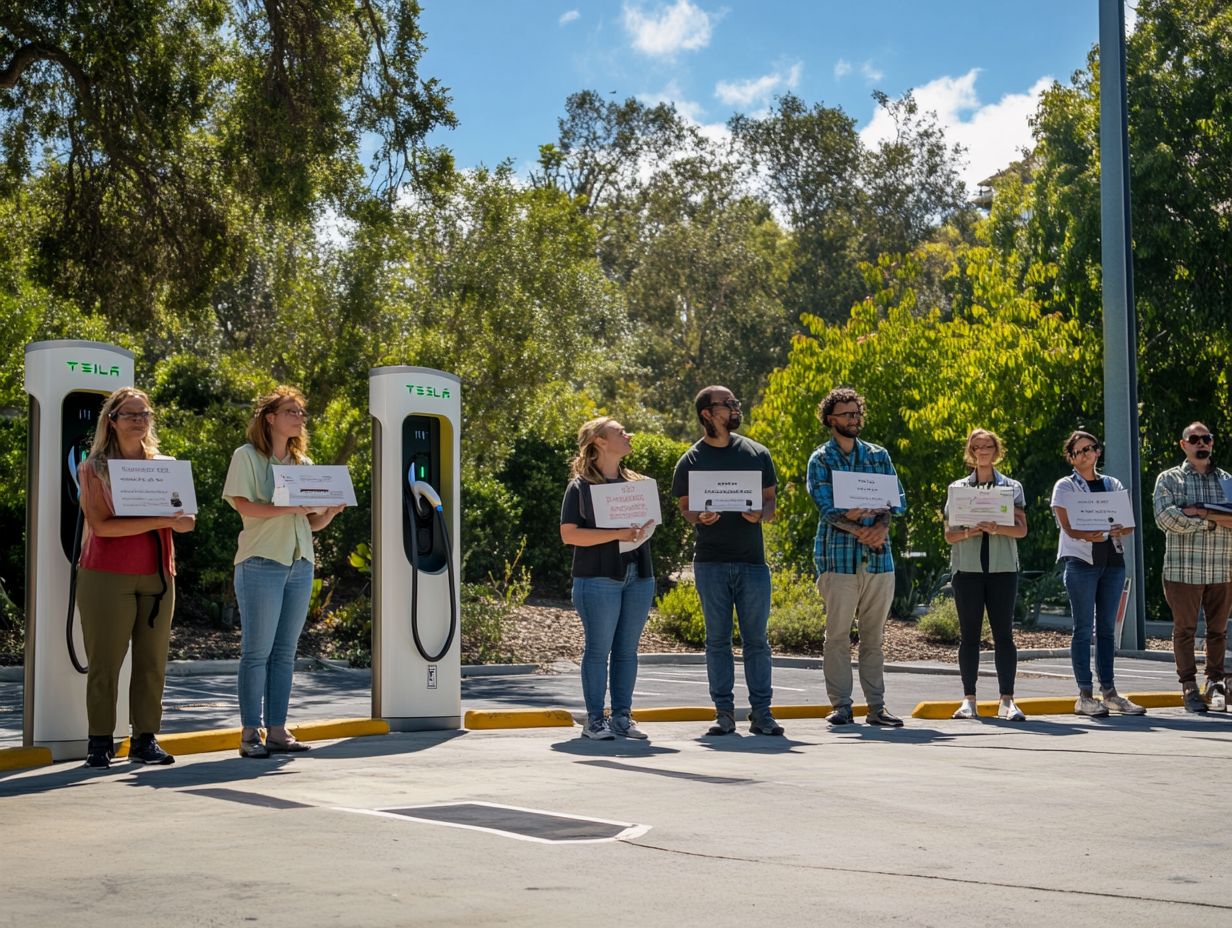
Funding and budget constraints are significant challenges in your quest to expand EV charging infrastructure. To overcome these challenges, get creative and explore various funding opportunities offered by local governments and federal programs.
Keep an eye on initiatives like the Inflation Reduction Act. Leveraging support from organizations such as the U.S. Department of Energy can be instrumental in securing the resources you need for infrastructure development.
Remember, strategic planning and collaboration are key to ensuring that budget limitations don t stifle progress toward equitable access to charging stations.
By tapping into federal grants aimed at renewable energy projects, you can unlock financial resources that enhance your mission. Local government initiatives may also offer incentives like tax rebates or direct funding for new charging stations, making it more feasible for communities to adopt electric vehicles.
Forming partnerships with private enterprises can open doors to joint funding opportunities and shared resources, fostering innovation while tackling financial challenges. Effective communication among all involved parties is essential for crafting sustainable solutions that expand EV charging networks.
Join the movement for a more accessible and eco-friendly future!
Resistance from Stakeholders
Resistance from stakeholders can pose a significant challenge when advocating for more charging stations, as some may question the necessity or feasibility of expanding EV charging infrastructure in their communities. Your approaches should center on educating stakeholders about the long-term benefits of EV charging think environmental justice, improved public health, and the potential for economic growth in urban areas.
Engaging stakeholders through open dialogue and data-driven discussions will help you build consensus. It s crucial to develop customized communication methods that address the unique concerns of various groups, whether they are local businesses, community leaders, or residents.
Showcase successful case studies from cities that have embraced EV infrastructure to provide compelling evidence of its viability. For example, a municipality might highlight how increasing charging stations led to job creation and boosted local commerce.
By fostering an inclusive environment where stakeholders feel heard and valued, you ll transform the journey toward a more sustainable and efficient charging network into a shared goal.
Success Stories and Examples
Success stories and examples of effective advocacy for charging stations can inspire you as you seek to enhance your community s electric vehicle infrastructure. These compelling narratives showcase the positive transformations that emerge from community initiatives, partnerships with local governments, and successful advocacy efforts, all leading to greater access to charging stations.
Dive into these stories to uncover valuable insights and strategies that are achievable and replicable in your own community, ultimately promoting electric vehicle adoption.
Unlock financial resources today to drive your mission forward!
Communities with Successful Charging Station Advocacy
Many communities in the U.S. have effectively pushed for charging stations. This shows how collaboration between groups and local governments can create change.
Cities like Chicago and Los Angeles are leading the charge! Their concerted efforts have led to major expansions of public charging infrastructure, setting a great example for others.
In Seattle, local environmental groups teamed up with city officials to launch awareness campaigns. They highlighted the benefits of electric vehicles and stressed the need for more accessible charging options. By conducting community workshops and gathering feedback, they identified high-demand areas for new stations.
In Austin, a group of civic organizations worked closely with local government to create incentive programs for businesses willing to install charging stations. These initiatives showcase the power of grassroots advocacy and the importance of strategic partnerships in building sustainable infrastructure.
Final Thoughts and Next Steps
The journey to increase charging stations requires a varied strategy involving advocacy, community engagement, and local government collaboration. This is essential to meet residents’ needs and promote electric vehicle adoption.
It s vital to emphasize the health benefits for everyone and the fair access for all that come with improved charging infrastructure. As you think about your community s unique needs and barriers, consider taking actionable steps to advocate for a sustainable transportation future.
Focus your efforts on identifying underrepresented areas that lack enough charging options. Advocate for equitable deployment in these regions. By building partnerships among local businesses, non-profit organizations, and environmental groups, you can create a unified voice for better regulations and funding.
Hosting informational workshops can help residents learn about the benefits of electric vehicles and charging infrastructure, leading to informed decisions. These strategies highlight the need for ongoing advocacy, community engagement, and collaboration, ensuring that electric vehicle adoption becomes a sustainable reality for future generations.
Frequently Asked Questions
1. How can I advocate for more charging stations in my community?
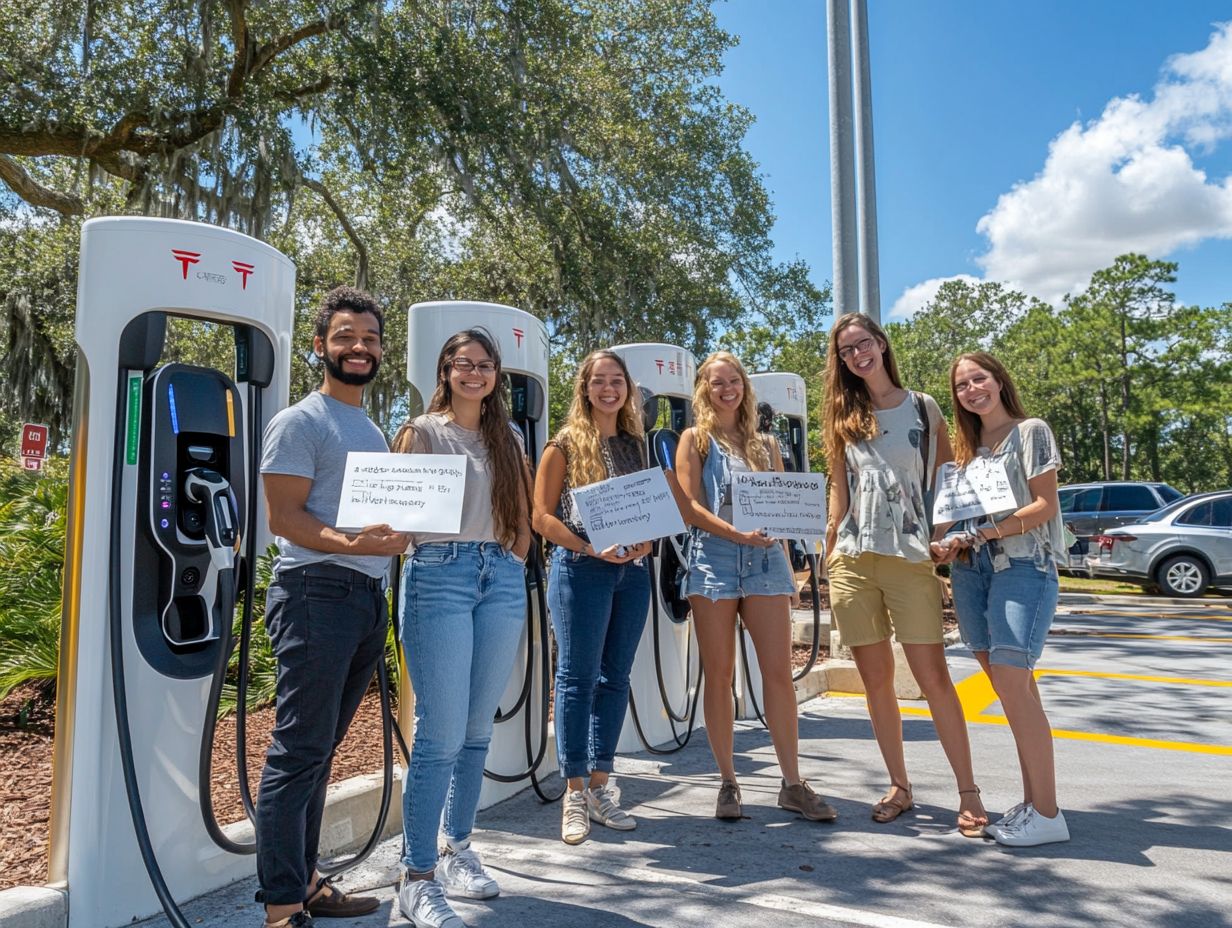
Start by researching the current charging stations in your area. Identify busy spots that need more stations and talk to local officials about it.
2. What resources can I use to support my advocacy efforts?
Several resources can support your advocacy for more charging stations:
- Online petitions
- Community forums
- Social media platforms
- Local electric vehicle (EV) clubs
Gather data on the growing demand for EVs and the benefits of shifting to a more sustainable transport mode.
3. How can I involve my local government in advocating for more charging stations?
Attend town hall meetings to present your case for more charging stations. Collaborate with local officials to apply for grants or incentives for funding their installation. Highlight the positive impact on the environment and the potential economic benefits for the community.
4. What can I do to encourage businesses to install charging stations?
Educate businesses about the rising demand for electric vehicles (EVs). Explain that offering charging services can attract more customers.
Highlight the financial perks, like tax incentives and extra revenue from EV drivers.
5. How can I raise awareness about the benefits of charging stations?
Raise awareness with tactics like educational events and EV test drives.
Team up with local media to share success stories from communities that support EVs and charging stations.
Use social media to spread the word and connect with like-minded individuals.
6. What are some potential challenges I may face in advocating for more charging stations?
Resistance from those unfamiliar with EVs can be a challenge. Address concerns and provide clear information to counter misconceptions.
Securing funding for charging stations can also be tough. Collaborating with local officials and businesses can help.

